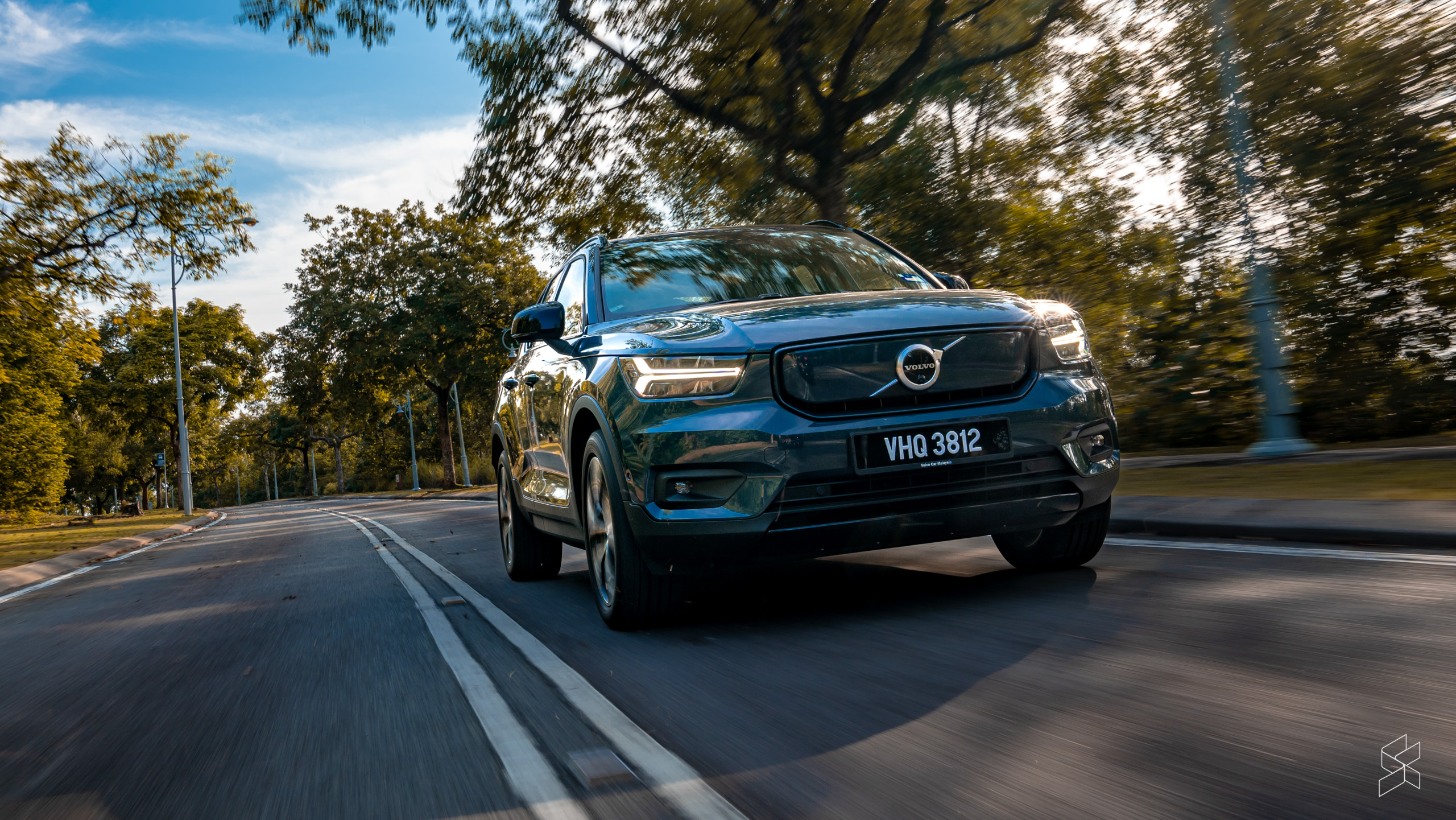This was originally supposed to be a simple review of the Volvo XC40 Recharge Twin, the electric version of Volvo’s smallest SUV. And yes, don’t worry, I’m still gonna tell you all about this car in this review. But after driving for a few days, folks, there’s a lot we need to talk about.
On the face of it, the XC40 Recharge Twin is as simple as electric cars get—it’s an XC40 with a big battery underneath and an electric motor instead of a petrol engine. Actually, make that two motors, hence the name. The powertrain is shared with the soon-to-be-launched C40, as well as the Polestar 2 that shares the XC40’s Compact Modular Architecture (CMA).
Hey good lookin’
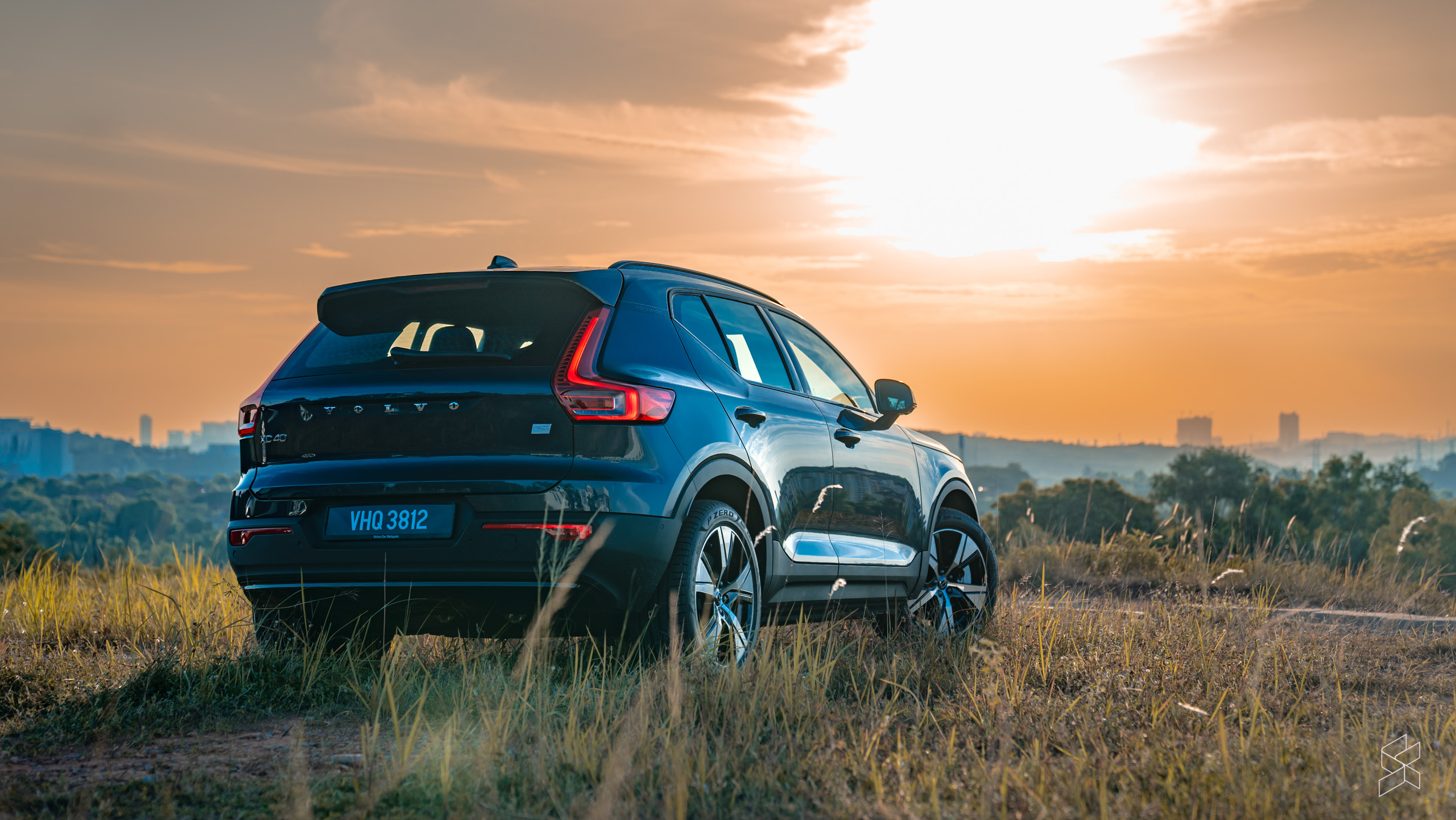
We’re used to EVs having sleek, futuristic designs but the XC40 looks almost exactly the same as the petrol model. That would be a disappointment for most cars but the Volvo looks so good already that to be honest, I don’t really care.
I love the blocky design, the Thor’s Hammer headlights, the upswept window line and the signature vertical taillights. The black roof and the ‘Recharge’ script on the C-pillars add further intrigue to what is already an interesting-looking crossover. It all just works, especially in the Denim Blue paint of our test car.
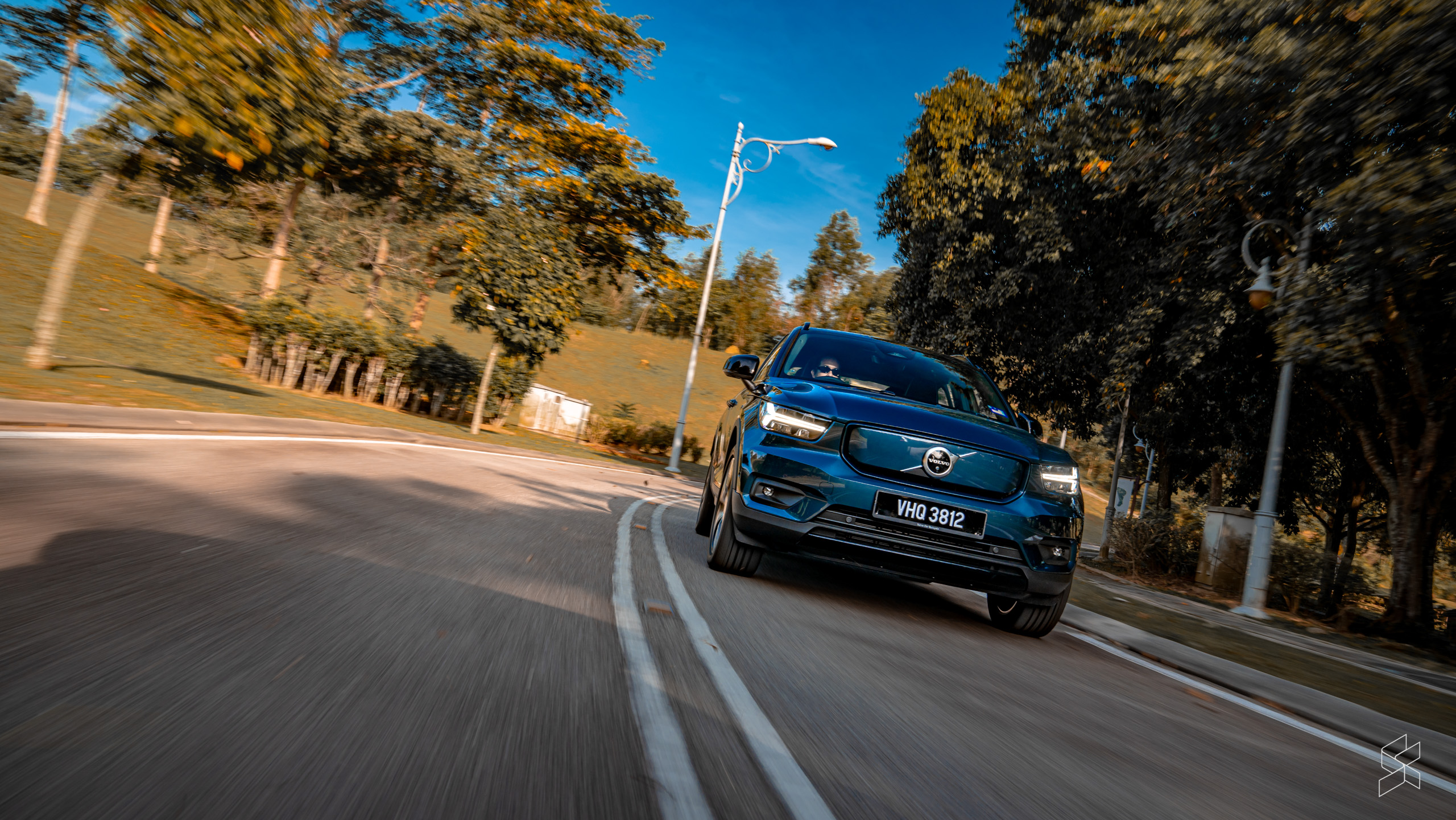
The only thing I don’t like is the blanked-off grille, which to me looks like a rushed job—it’s too simple and it looks cheap. Actually, this car is already outdated, because there’s already a facelifted model. Thankfully, if you put your order in now, you’ll get the updated 2023 version.
One other thing I’d like to point out. The taillights look nice, but the brake lights use normal bulbs that are slower to light up and may cause those driving behind you to react later in an emergency stop. That could make a difference between them stopping in time and a costly body shop bill—or worse. That’s not great coming from Volvo, a company supposedly obsessed with safety.
Stylish and practical interior
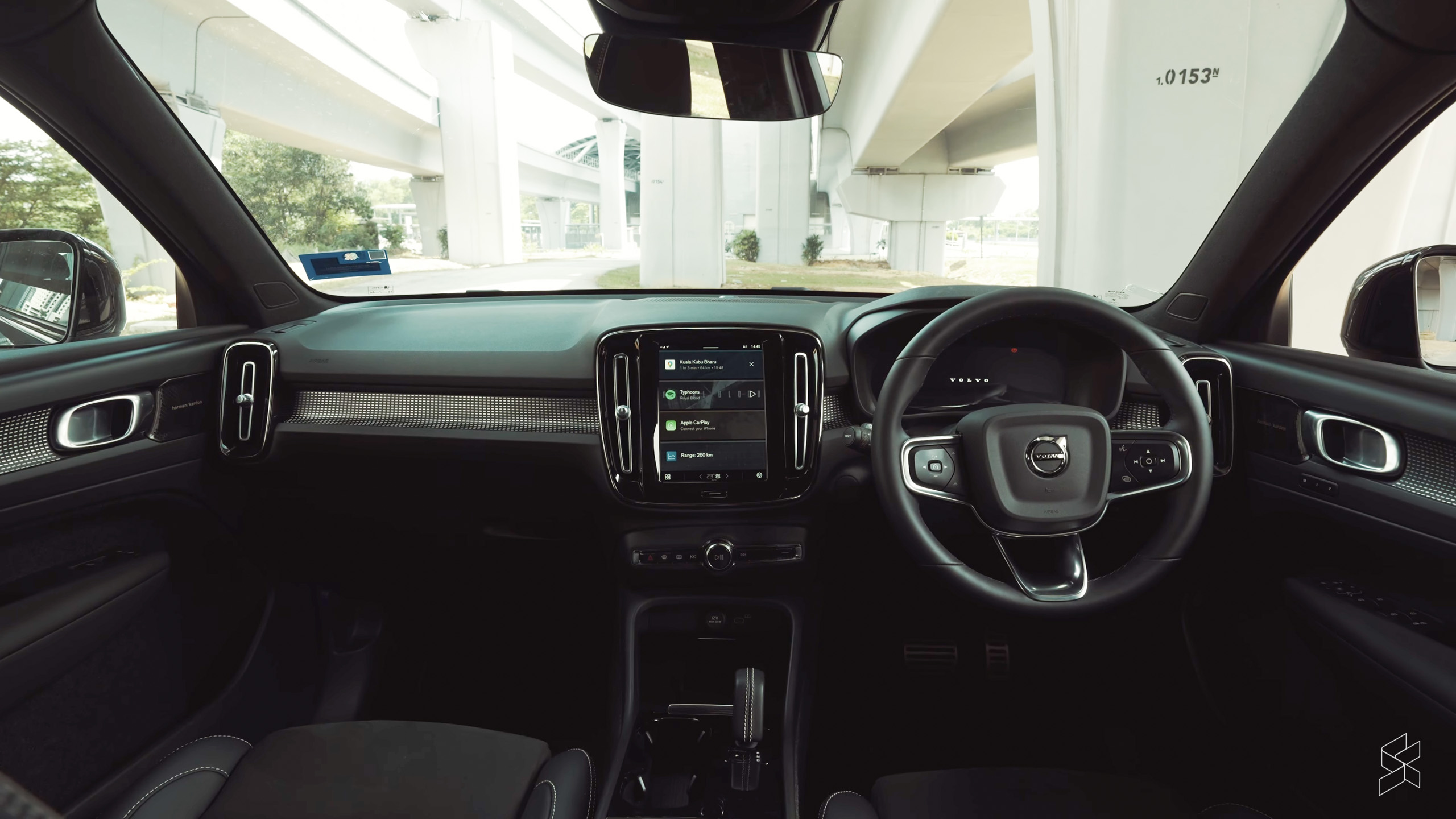
The interior will be very familiar to those who have used a recent Volvo. There’s a simple but pleasant design that gives off a real Scandinavian vibe, and the large portrait touchscreen is reminiscent of Teslas from a few years ago. Also like Tesla, there’s no conventional starter button—you simply get in, pull the gearlever and drive away. It does take some getting used to, but it’s fun once you get the hang of it.
Added to that are some thoughtful features designed into the cabin, such as a card holder under the screen, and a rubbish bin that you can remove to empty it out, which is a really nice touch. There’s also a parking ticket holder at the base of the windscreen, but that’s not so useful now that everything is done through your phone these days. I tried putting my house RFID card there but it didn’t really work.
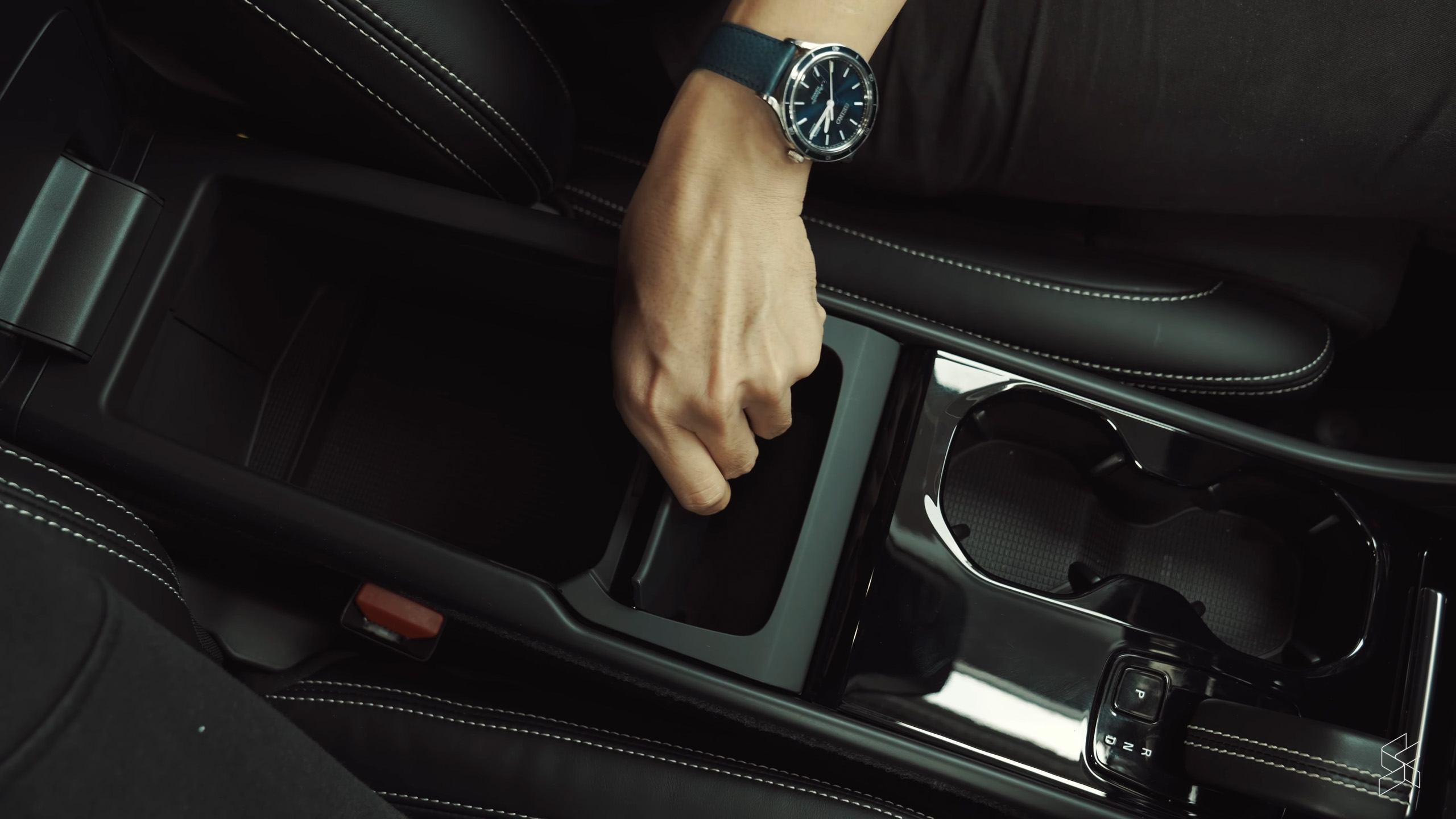
Build quality is just about okay. Everything feels well put together and you get nice touches like the chrome air vents and the cool silver trim on the dashboard. The seats, which are very comfortable, by the way, are upholstered in this leather and suede, which is nice.
I’m not so fond of the material selection. The dashboard is slush-moulded, so it should be soft to the touch like many other upmarket vehicles, but instead it’s stiff and lacks the premium feel of some of its competitors. And the doors and centre console are covered in a hard satin plastic that European car makers seem to like—it feels cheap, attracts fingerprints like nobody’s business and will probably get scratched up by next Tuesday.
Wasted screen space, despite the tech
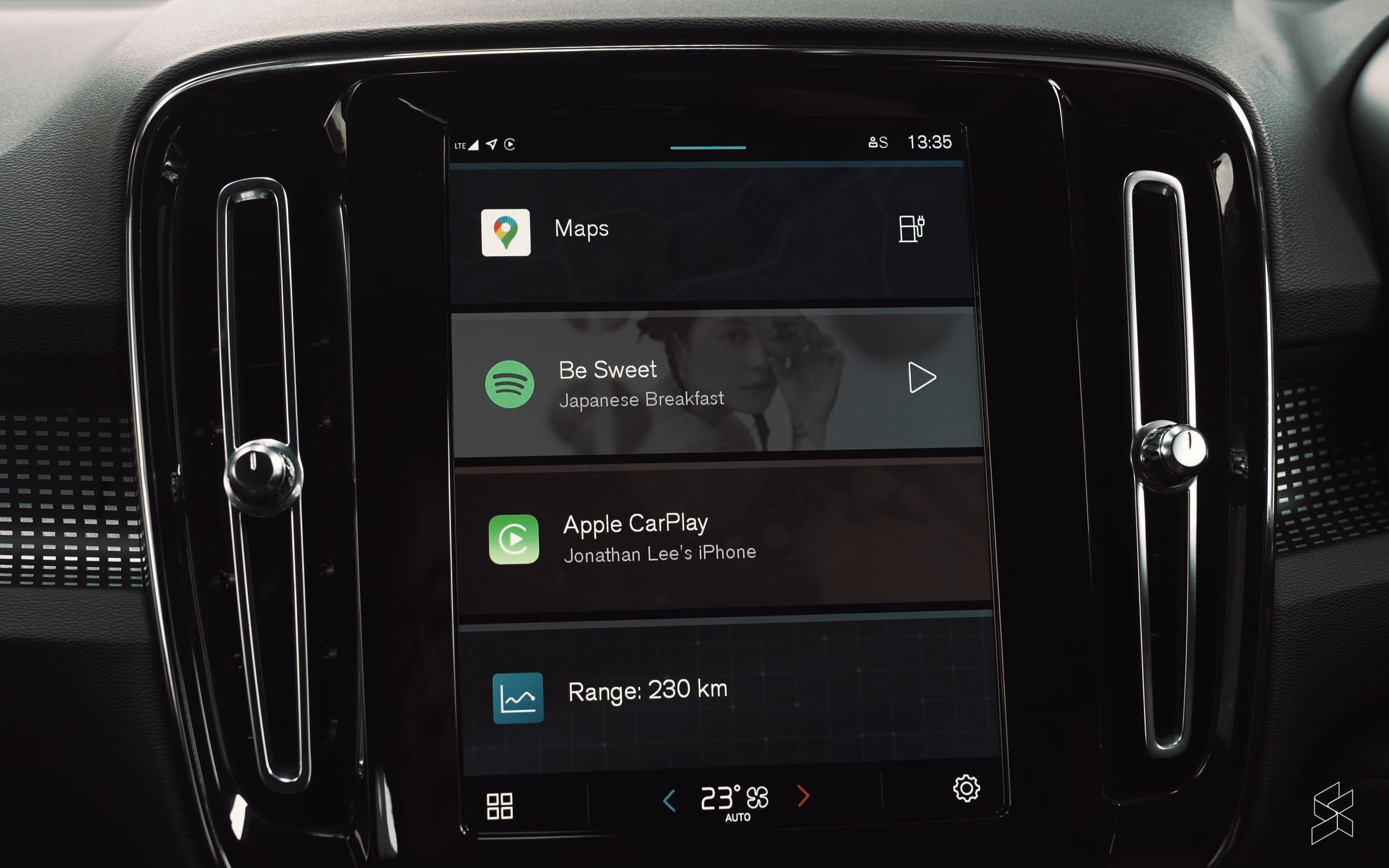
Unlike the regular XC40, the electric version gets Volvo’s new infotainment system, based on the Android Automotive OS. This means it gets Google services, including the Play Store. Don’t expect the app selection that you’re used to on Android phones, however. Everything has to be optimised for use in the car, and as a result the app store is a little barren.
You do at least get the Google Assistant and integrated Google Maps, which is much more useful – and reliable – compared to the usual built-in navigation systems. It’s very well integrated and you can also search for the nearest charging station through the app.
The nine-inch portrait touchscreen is sharp with lots of contrast, and it’s very responsive. The only problem is that the air-con controls are all hidden in a separate menu, including the fan speed. You can adjust the temperature at the bottom of the screen, but the arrows are tiny and easy to miss.
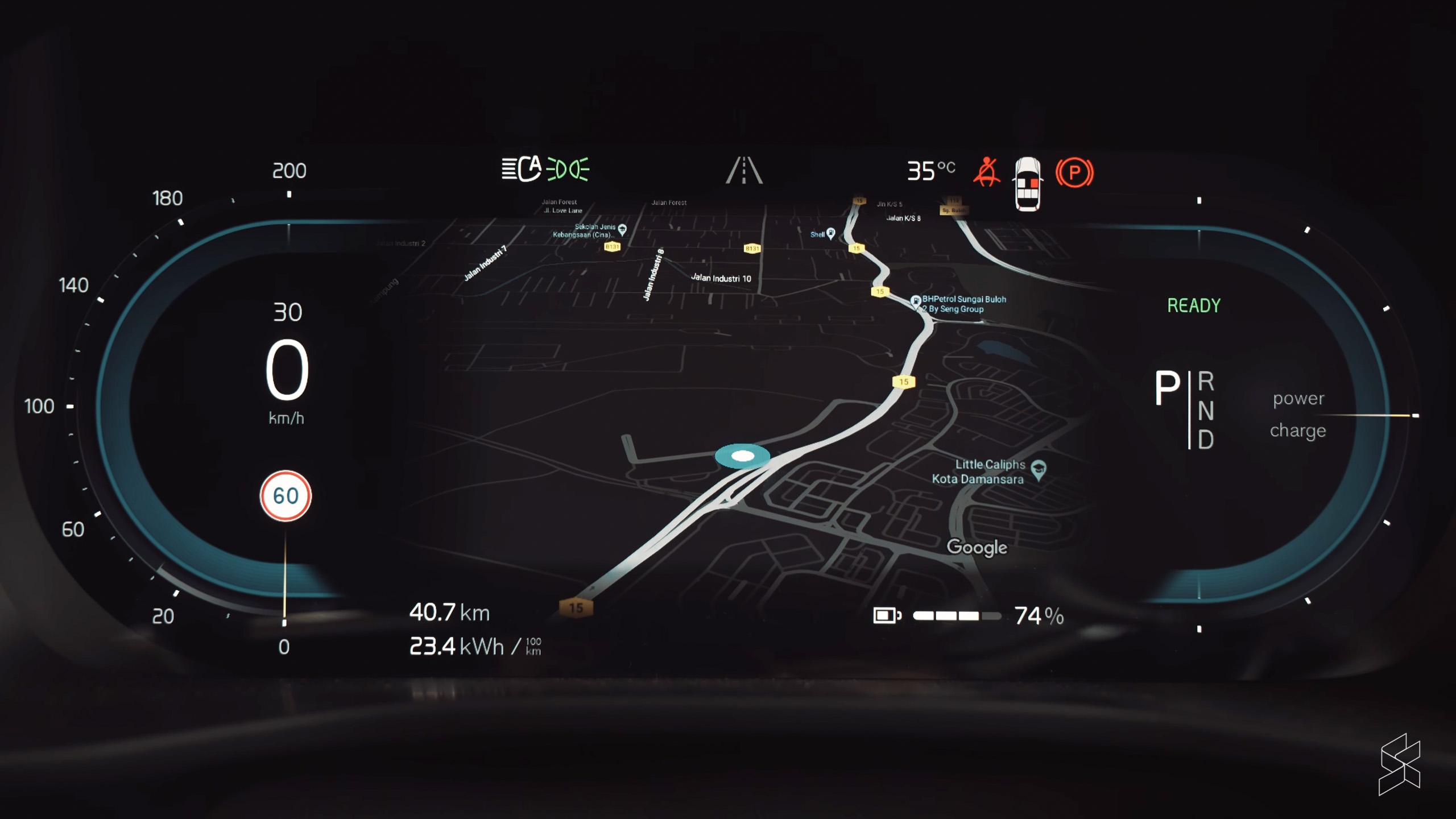
The 12.3-inch instrument display is also very legible. Better yet, Google Maps is integrated right in this screen, which means the map is nicely in your field of view; you don’t have to look at the touchscreen all the time.
Unfortunately, that’s all you can do with this display. There’s all this screen real estate but you can’t really customise it. You can only bring up your trip computer and turn the map display on or off. You can’t put the current song on there, and you can’t even see the range unless the battery gets under a certain percentage. That’s a huge oversight for an electric vehicle, and it definitely amps up the range anxiety quite a bit.
Good for luggage, less good for rear passengers
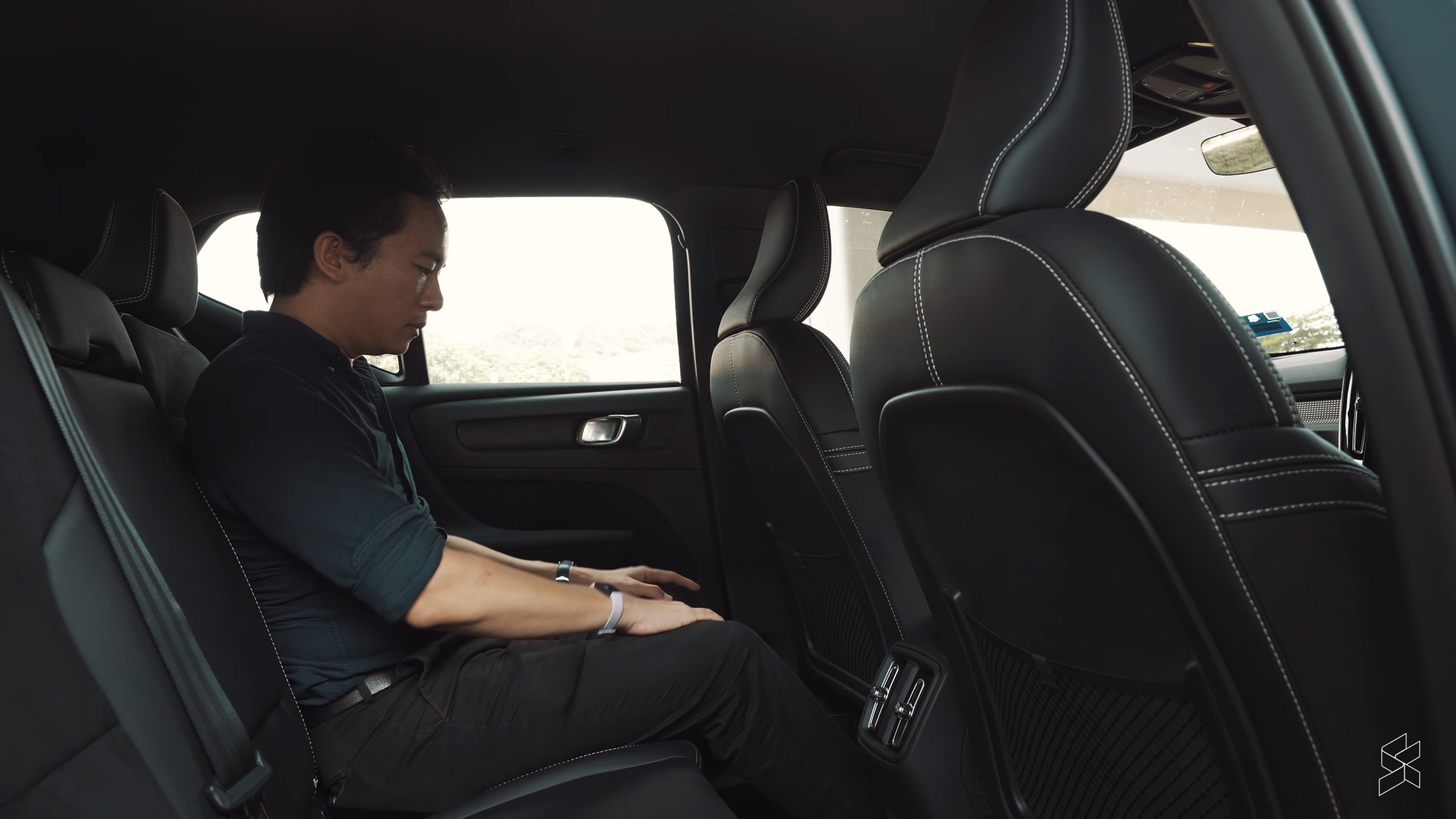
The rest of the cabin is a little basic, but it works. There’s decent rear headroom, and legroom is okay, but you’re not going to mistake this for a limo back here. The main problem is the backrest—it’s too upright, and you can’t recline it like you can in some other SUVs.
Also, the fact that this uses a conventional car platform means that despite this being an electric vehicle, there’s a tall transmission tunnel for the middle passenger to straddle. Volvo did put some of the battery cells underneath this tunnel instead of under the floor, so your feet aren’t pushed up like they would be in some other EVs. You also get amenities like rear air vents, two USB-C ports and two cupholders.
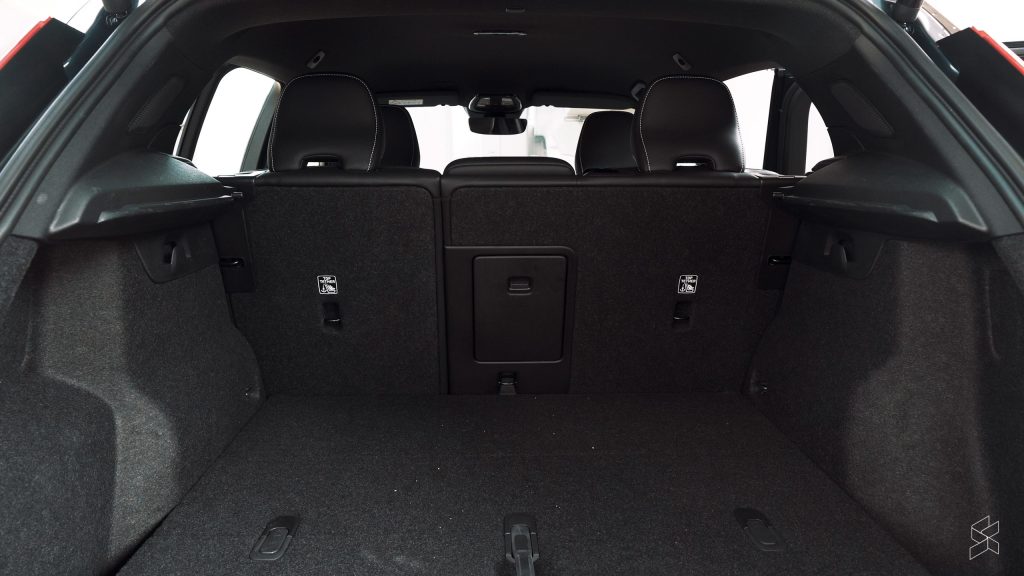
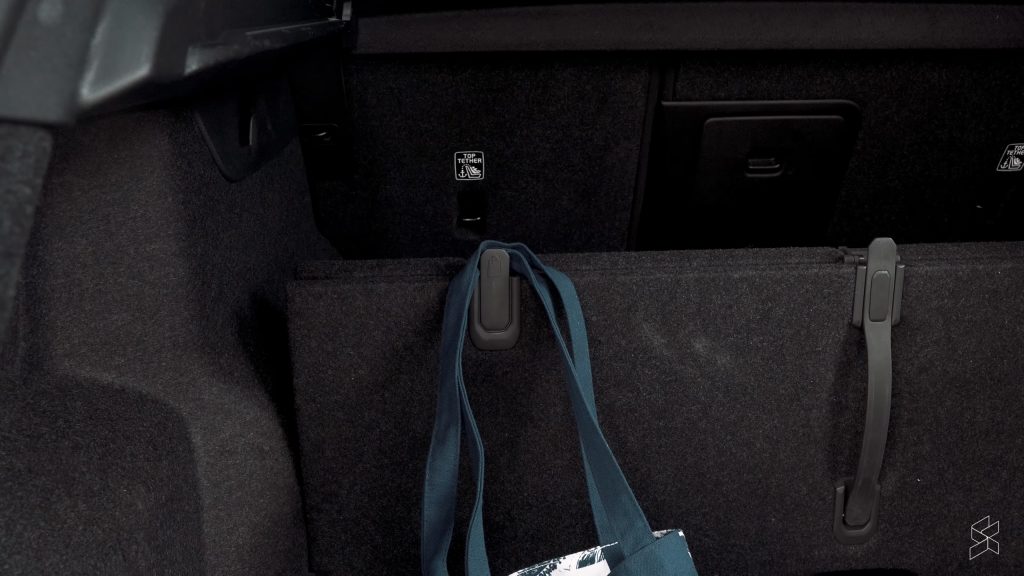
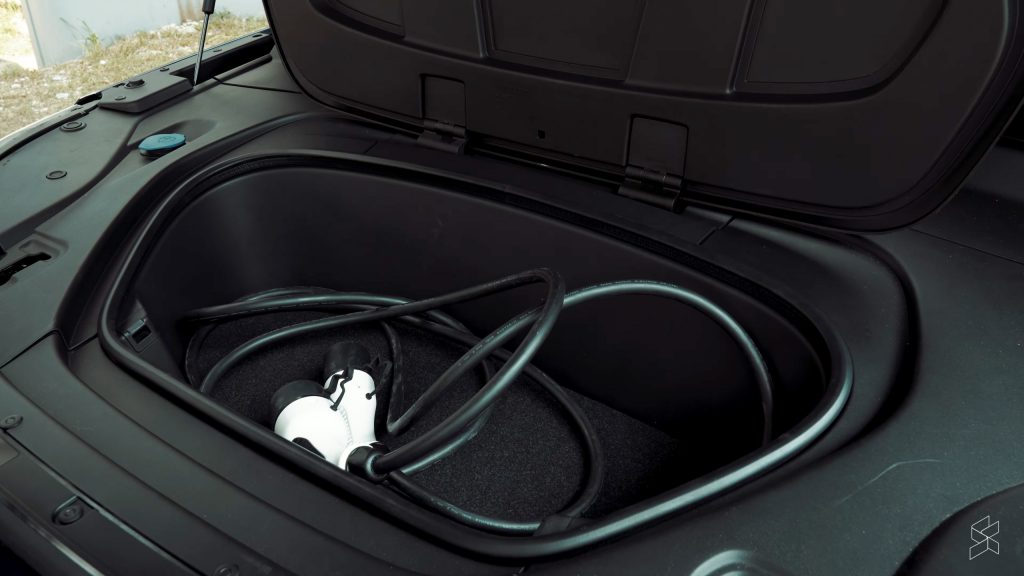
The boot measures 418 litres, which is slightly smaller than the petrol model’s 452 litres, but it’s still big enough for most road trips. There’s space underneath for your charging cables, and you can even hang your shopping bags on the hooks that are built into the floor, which forms a little divider when it’s folded up.
Need more luggage space? There’s a small cubby hole underneath the bonnet where an engine would reside. At 31 litres, it’s not big by any means, but it’s double what you get in a Hyundai Ioniq 5. You can put a charging cable in there, or a small duffel bag for a weekend away.
Wolf in Volvo clothing
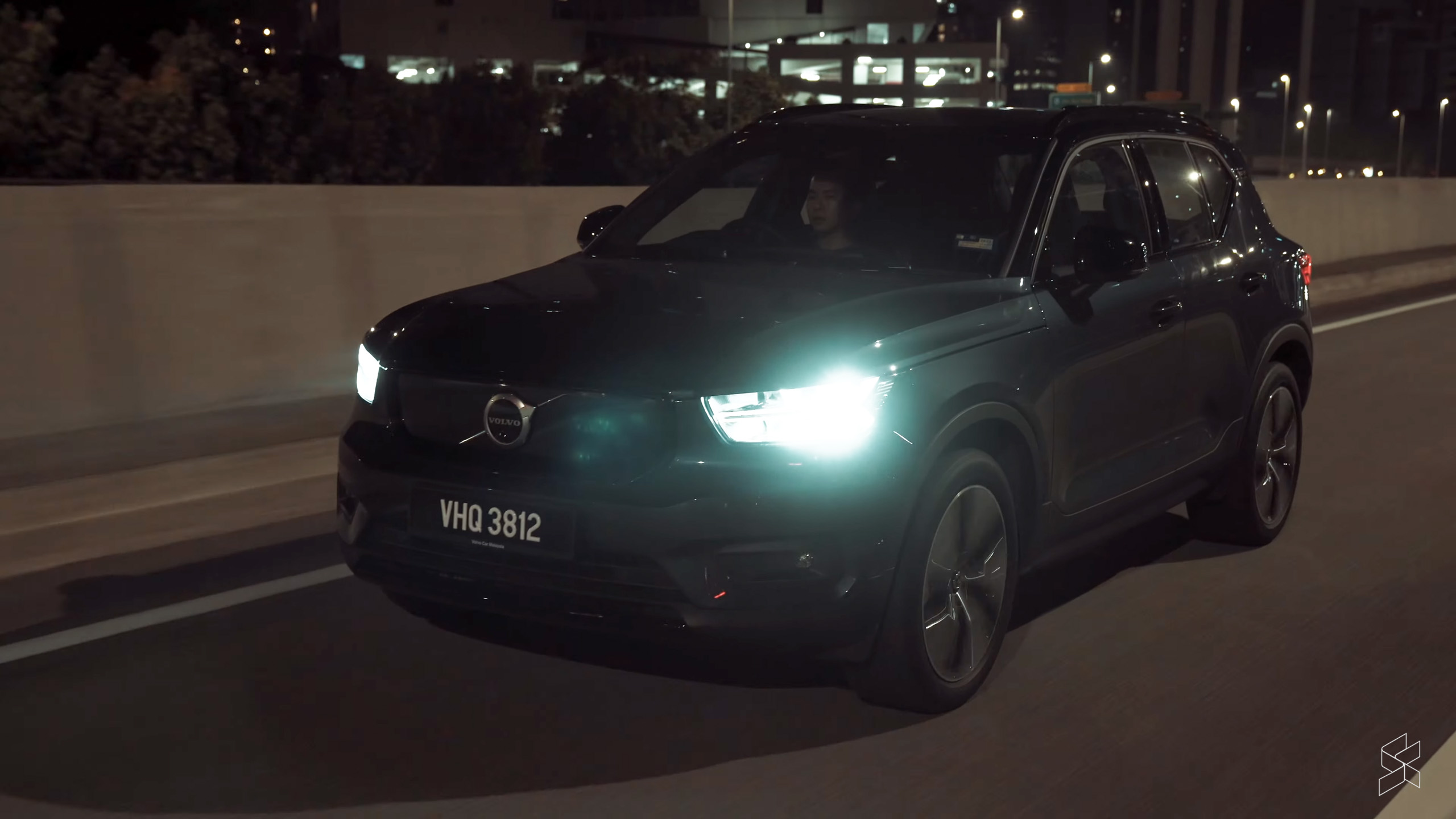
Initially the XC40 feels just like any other electric car to drive. It’s quiet and the torque comes instantly the moment you ask for it. The throttle is also quite long and progressive so you don’t rocket straight into the car in front of you. You could be fooled into thinking this is just a regular, fast-ish electric SUV. Then you pin the throttle and you realise just how much power this car actually has.
The numbers are insane—402 hp and 660 Nm of torque, making it the most powerful EV sold in Malaysia this side of a Porsche Taycan. Those are broadly the same outputs as Volvo’s plug-in hybrids, but here there’s no downshift, no waiting for a petrol engine to wake up and get going. You just get pushed back into your seat and watch as your eyelids get pulled back and the car gets fired to the horizon.
Volvo claims a 0-100 km/h time of 4.9 seconds, which is nearly as fast as the latest Volkswagen Golf R. We timed our test car three times and it was bang on the money every time. The top speed, on the other hand, is limited to 180 km/h, as part of Volvo’s campaign to reduce speeding.

All this speed comes with no drama and no noise. There is some road roar coming from these Pirelli P Zero EV tyres, however, so it’s not quite as refined as it could be, although wind noise is kept to a minimum.
Despite the sheer performance on tap, the throttle pedal is linear, so you can easily dial in just the amount of power you want. The brakes, however, are quite sharp and that makes it a bit difficult to drive the car smoothly.
Decent range, but lacks options
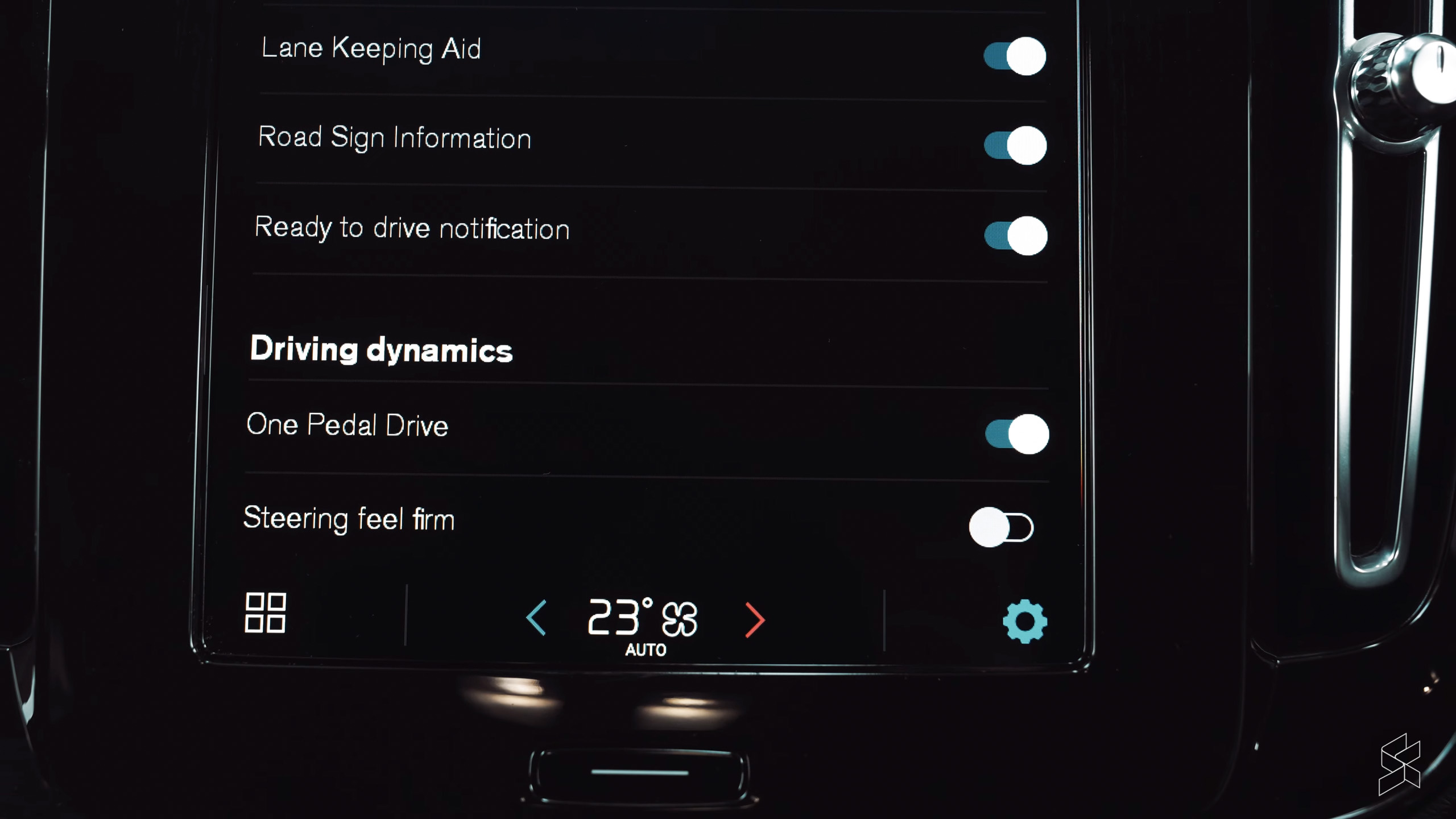
The XC40 has a 78 kWh battery that provides a range of up to 418 km. That’s slightly shorter than the also-all-wheel-drive Hyundai Ioniq 5 Max (which can cover up to 430 km on a single charge), coming with a slightly smaller battery and quite a bit less power than the Volvo.
Suffice to say that in normal driving you don’t even think about the range. You can go where you need to go and when you get back home you just have to remember to plug it in. I will say that during our long shoots and with some performance driving thrown into the mix, the battery did drain pretty quickly, so keep that in mind if you have a long day of driving ahead of you
By default, the XC40 comes with no regenerative braking. Lift off the throttle and the car will just coast instead of slowing down. There is a one-pedal driving mode, but it’s buried deep in the settings. Again, the transition between acceleration and braking is quite sudden, but you’ll get used to it. I just wish they could’ve added the ability to adjust regen braking, perhaps using paddles on the steering wheel.
Not as comfortable as it looks
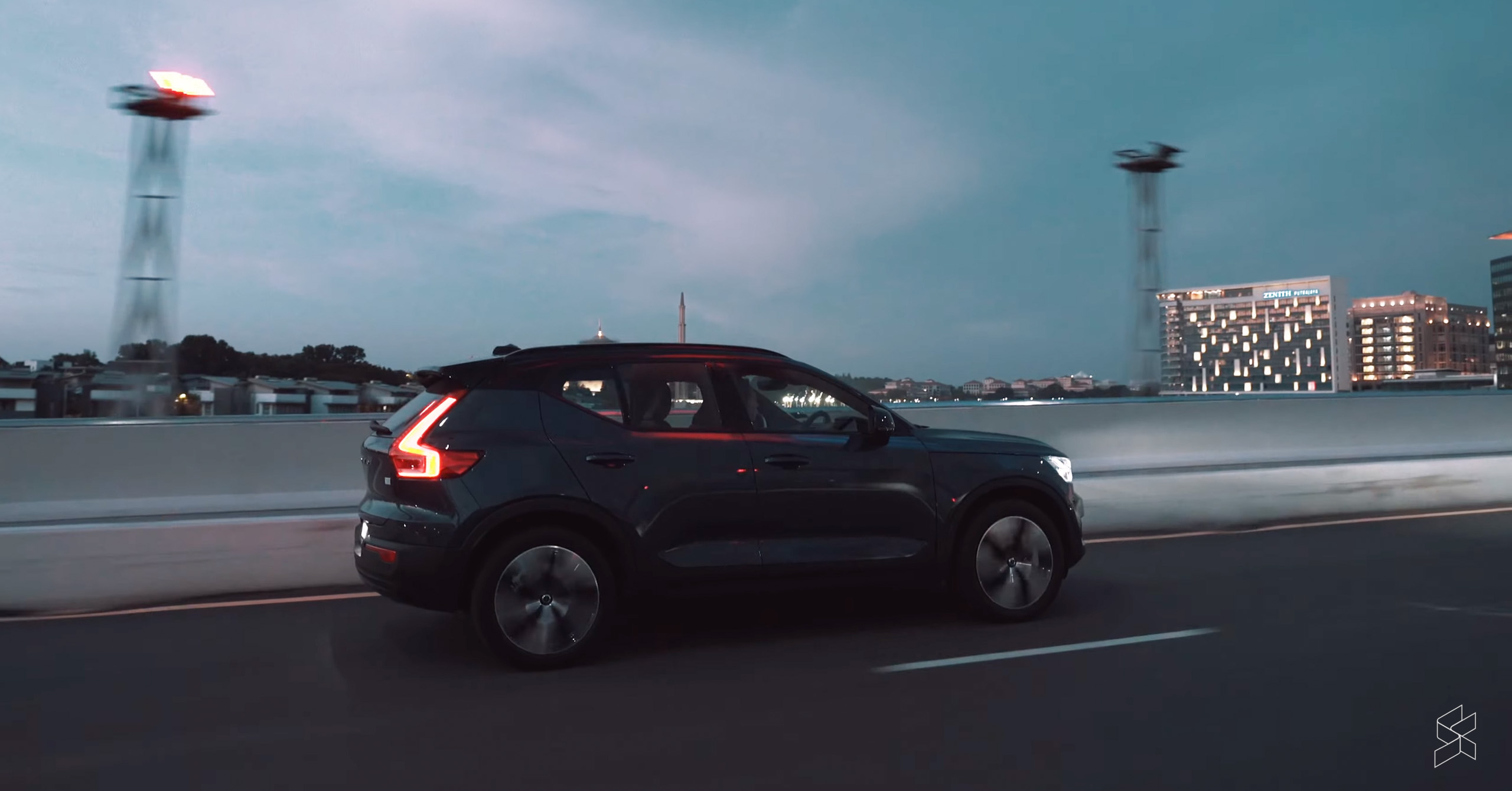
One thing you’ll notice is how stiff the ride is. It’s not rock hard, but the XC40 EV occasionally crashes over bumps and potholes more than you’d expect. It is a bit jarring—if you’re looking for something very comfortable, this might not be the car for you.
The suspension has to be this firm because it needs to support the weight of the car—over two tonnes—and the amount of power this thing has. I mean, this has almost as much power as a Mercedes-AMG A 45 S and a lot more torque. And nobody complains about that car being stiff.
But I understand that people looking at this car probably just want a comfortable grocery getter. Perhaps Volvo could have added adaptive dampers so you can make the ride softer if you’re just driving to the supermarket and back.
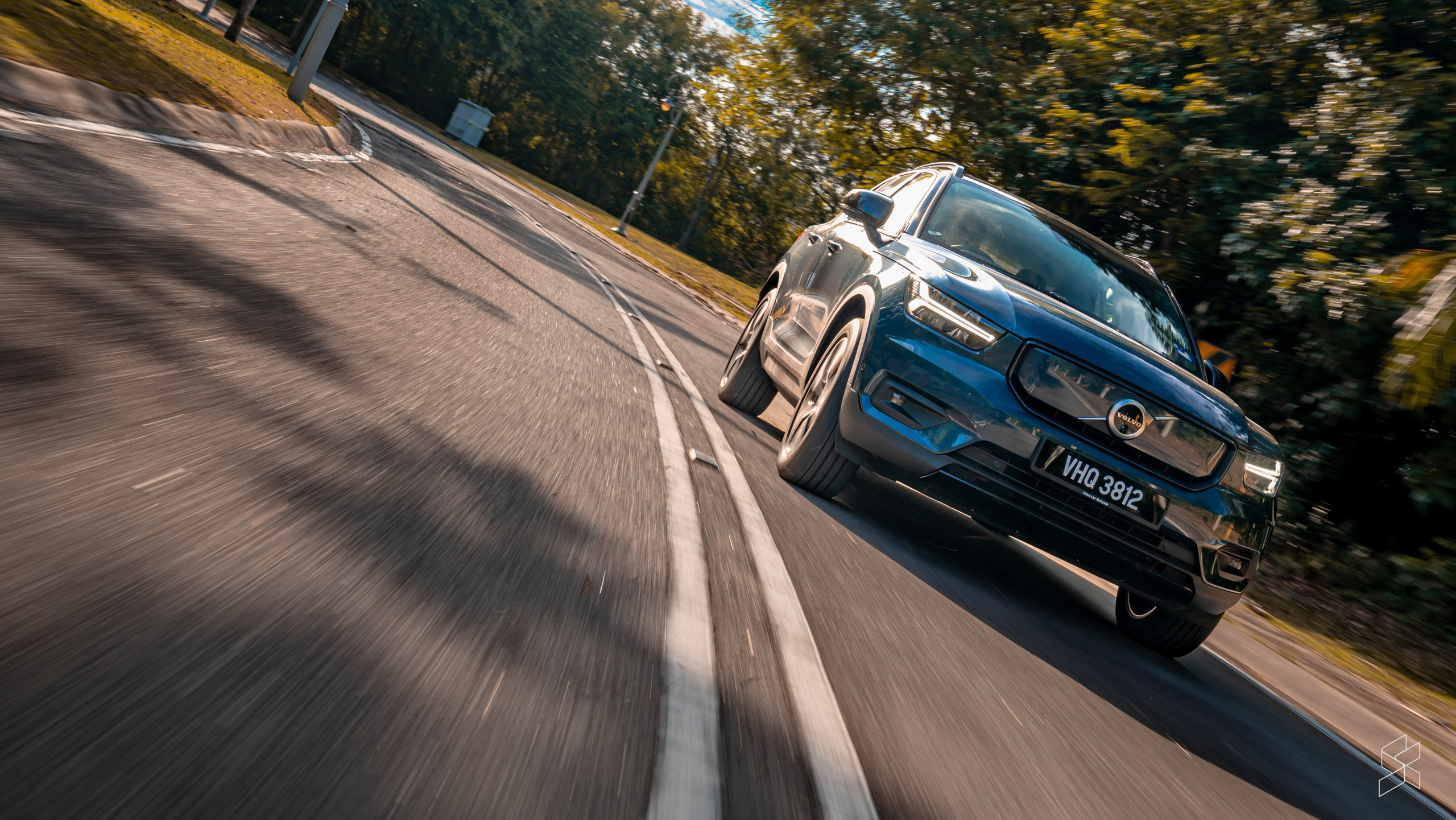
The result of all this is a car that feels very serious to drive. The XC40 EV might look like a fun little SUV but the moment you set off you realise it is anything but. This feeling extends to the handling—as with most EVs, the batteries are mounted low in the floor, so the centre of gravity is also low. As such, the Volvo feels stable in the bends, aided by the all-wheel-drive traction.
And yet, a hot hatch on stilts this is not. The steering is a little light and lacking in feel, and the firm ride doesn’t seem to have made an appreciable difference to body control. The XC40 rolls quite a bit when you flick the ‘wheel and is particularly susceptible to pitching under acceleration and braking—more than one time I caused my colleagues to be sick when driving in a spirited manner.
Lots of driver assists, but…
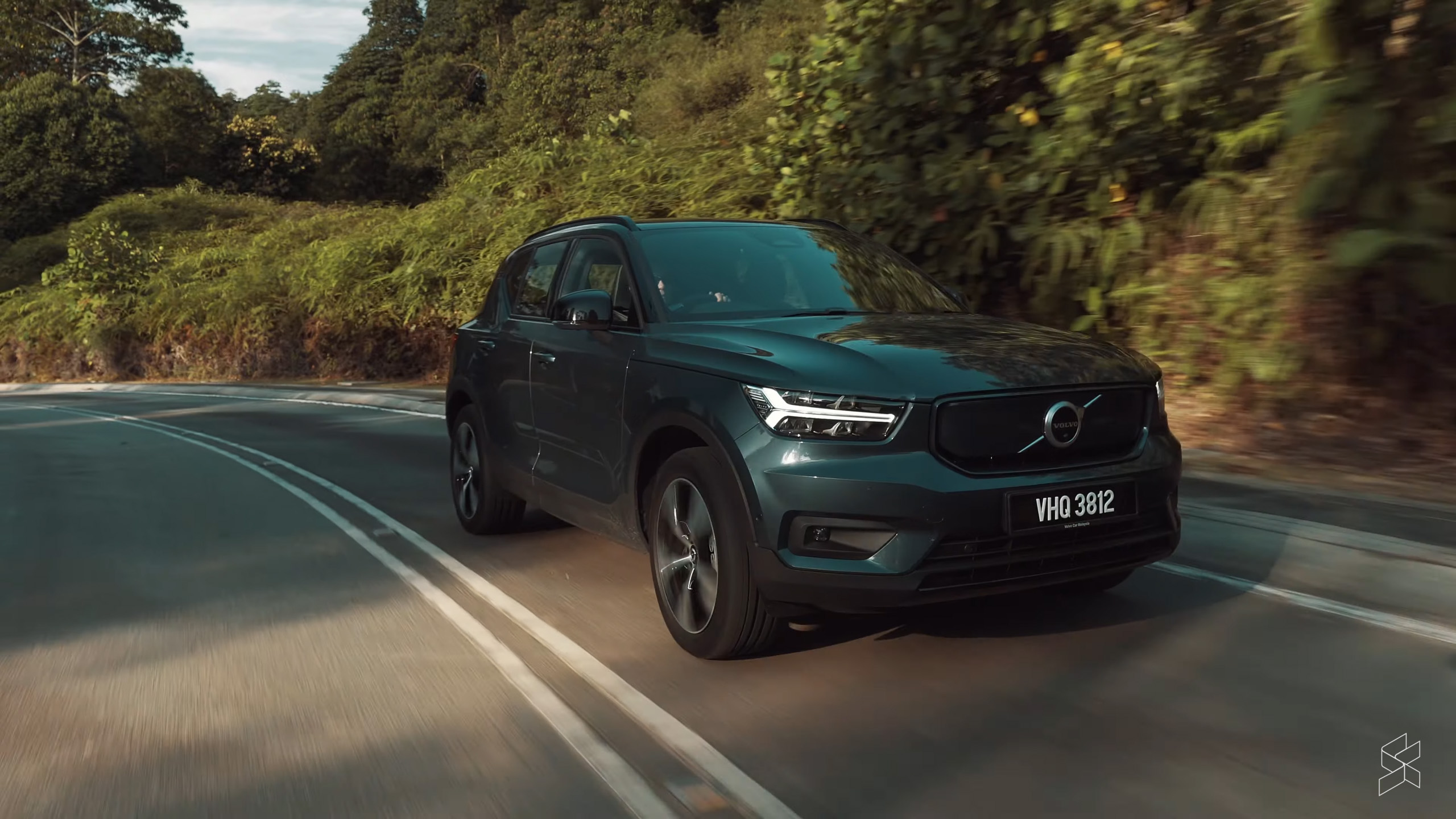
As befits a Volvo, the XC40 comes with all the driver assistance features you could want, including the usual autonomous emergency braking and blind spot monitoring, but also some unique Volvo tech like large animal detection and road departure mitigation. The highlight is Pilot Assist, which bundles adaptive cruise control and lane centring assist to enable Level 2 autonomous driving.
You may have seen other reviewers say that Volvo’s automated driving system is much improved and can now be relied on for driving on Malaysian roads. But I found that that was a lot of, um, horse manure.
The car kept pulling to the left of the lane, which was a little disconcerting. Worse still, it often didn’t self-centre quickly enough when rounding off a bend, meaning that I had to take evasive action to avoid hitting the car next to me. I once had to swerve so hard that my colleagues in the car behind me thought I was falling asleep and checked in to see if I was okay. Most of the time, I just got fed up, disabled it and drove myself, and that’s never the goal.
Hassle-free charging…when it all works
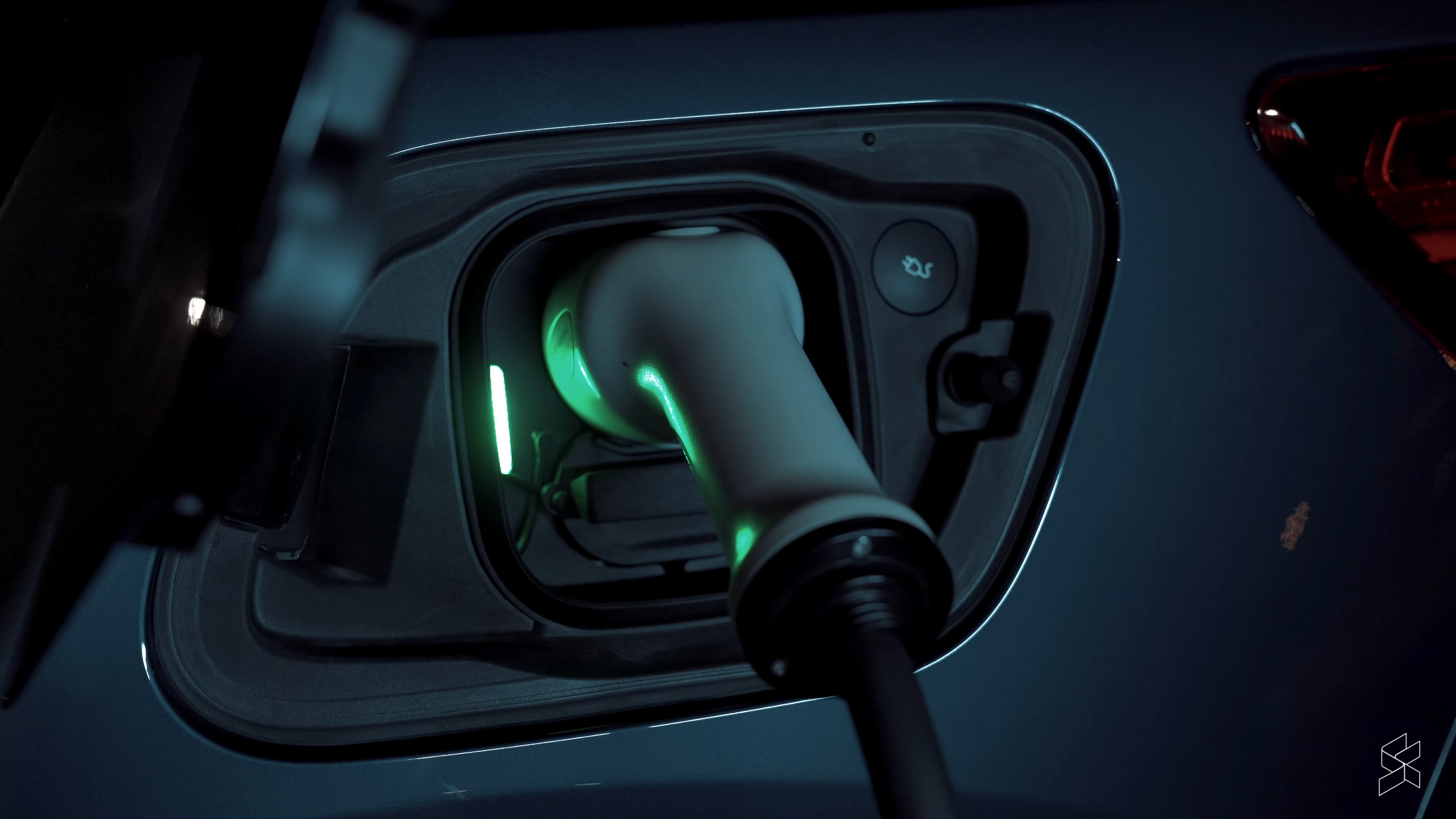
The XC40 EV comes as standard with your usual garden-variety three-pin charger, which is useful if you just drive to the shops and back. But it will take a while if you have a flat battery—a full charge takes a whopping 40 hours, or nearly two days.
You’re much better off with a wallbox charger. The XC40 accepts up to 11 kW of AC power and that will fill up the battery in around seven to eight hours. That’s still quite a long time, and it also means you can’t take full advantage of the 22 kW chargers currently being offered by ChargEV.
A DC fast charging station is your best bet—if you can find one. The XC40 supports up to 150 kW charging, and that will charge the battery from 10 to 80% in just 28 minutes, adding up to 100 km of range in ten minutes.
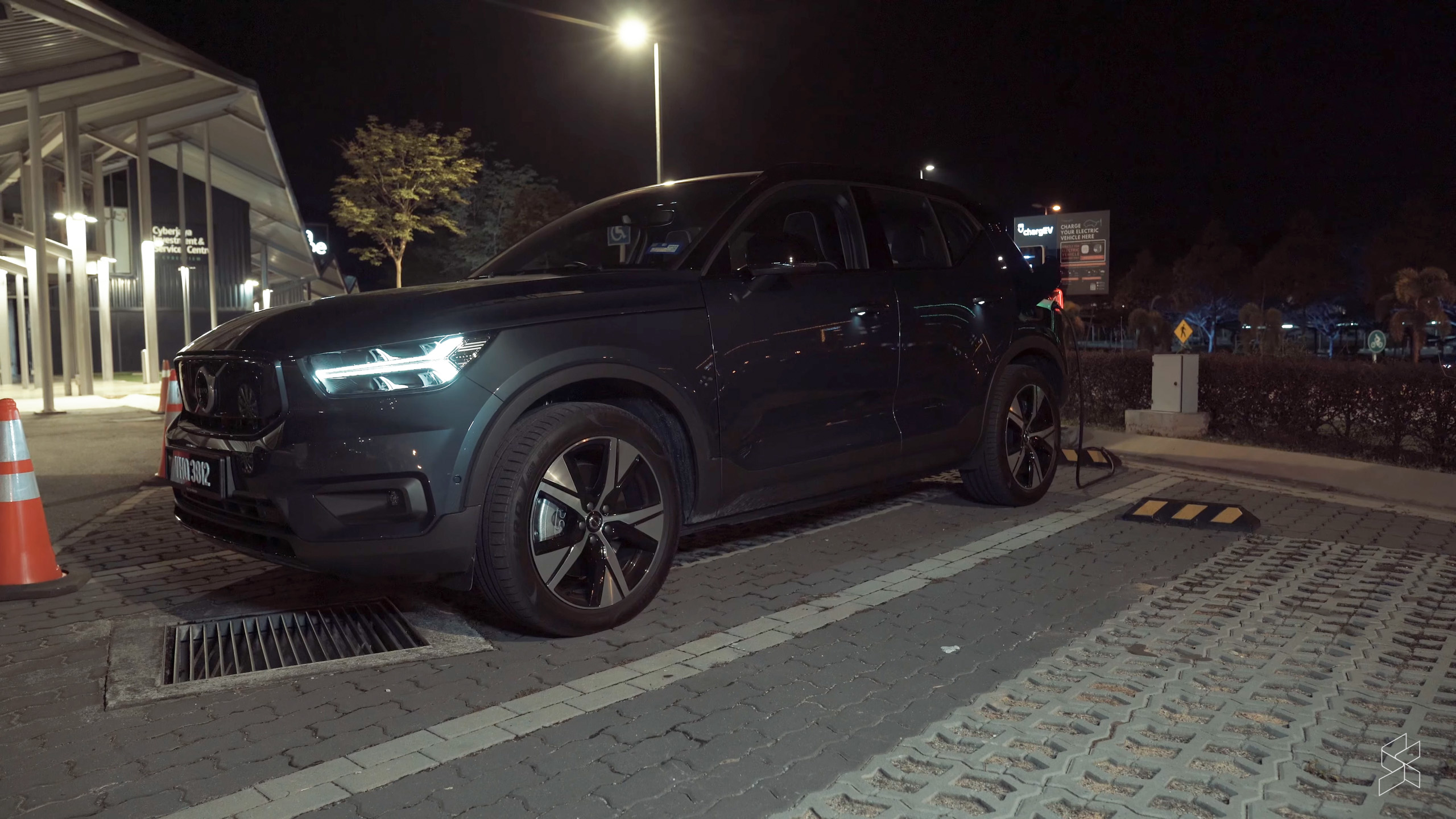
This is where this simple review goes on a bit of a tangent. See, finding a charging station is one thing, and in the Klang Valley at least, you can pretty much plug in at almost every shopping mall. But finding a charger that actually works is a whole different story. We didn’t drive the XC40 to Penang like we did the Hyundai Kona Electric, but I encountered exactly the same issues that Rory did.
We tried to charge the car five times during our shoot. Three of them were ChargEV stations that did not work, including one at Menara Etiqa in Bangsar where you’d expect it to work, given the area’s popularity (and affluence). And when we did get to a place that had two stations, the one that was working was being hogged by a plug-in hybrid who had left the car plugged in for 12 hours. And of course, the other station wasn’t working.
After going to another station that was either not working or not open to the public, we finally found a working ChargEV charger deep in Cyberjaya. It was a stressful experience and while we were very excited to find a charger, it really shouldn’t be this way.
Something needs to change
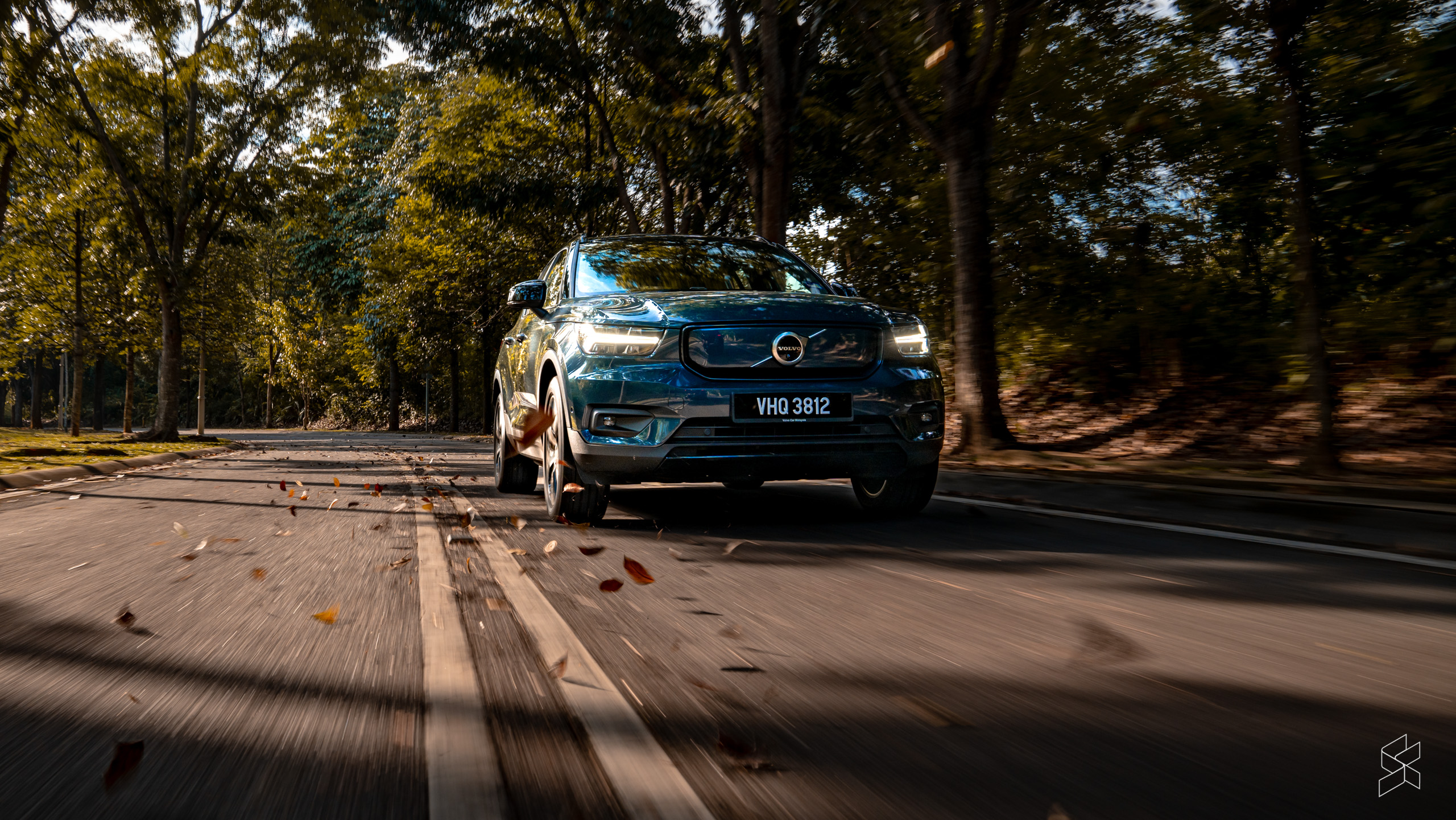
So, where does this leave us? We’ll start by talking about the car itself. The XC40 is a very fast, very good-looking premium electric SUV that’s not as intimidating or as aggressively futuristic as the Hyundai Ioniq 5, but also not as dull as the Mercedes-Benz EQA—and definitely nowhere near as ugly. It’s hard to think of a better bargain for under RM300,000 (the car was priced at RM262,460 without SST at launch).
But I’m sorry, it’s hard to separate the car from the experience of charging it, which has been completely spoiled for me. After all, an electric vehicle is only as good as the charging infrastructure that supports this, and ChargEV has really dropped the ball here. And I’m sure it’s not the only one.
And I know it’s a bit harsh to mention all this when talking about the XC40, because none of this was its fault. But this is a review—we have to tell you the unvarnished truth about what this car is like to live with, and it’s our journalistic duty to speak out about these things and make sure these companies do better.

Let me also just make it quite clear—I am not an EV hater. Yes, I come from an automotive background, love petrol engines and drive a manual car. But I also like driving electric cars, and after a few days getting used to the stiff ride and the sharp brakes, I really grew to enjoy this car and I could see myself living with it every day. Until I had to charge it.
All this is to say that the XC40 Recharge Twin is a good car and a great EV. But as with all EVs, unless you’re ready for the headache of charging it you might want to hold off until the infrastructure is not only more extensive but also more reliable. And just the fact I have to say that is a great shame.
Photography by Sofie Danial

